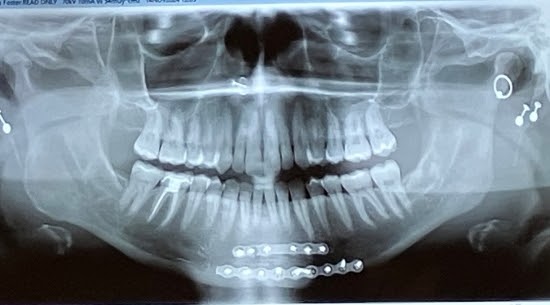You’ve been weight training for a few weeks and are anxious to see the fruits of your labors. Where are those popping biceps and the ab ripples you’re looking for? Slow down my friend! Muscle gain takes patience, dedication, and consistency.
On average, you can expect to gain about a pound of muscle mass per month. But even then, you’ll need to train properly, use progressive overload, and consume enough calories and protein to support muscle growth. Plus, we all have different timetables for muscle growth. Some people build strength and muscle size faster than others.
But even when you don’t have visible muscles when you flex, there are subtle signs you’re making progress and visible muscle growth will soon follow. Let’s look at some of those.
Increased Strength
Even without documented muscle growth, you’re making gains if you’re getting stronger. If you can lift heavier weights or do more repetitions than before, you should slowly start to see muscle growth if you stay on course. That’s the hard part – being patient.
Stay engaged with your training! Keep a fitness journal and log your workouts and nutrition to make sure you’re sticking to the plan. As your lifts become easier, increase the resistance or number of reps you’re doing to make progressive overload work for you. Celebrate the small victories too, like the extra rep you did with perfect form!
The Scale is Going Up
Muscle growth is often slow and gradual, even if your training is on point. You might not see your biceps pop right away. The first sign that you’re building muscle may be an increase in body weight. The number on the scale goes up because muscle tissue is denser and heavier than fat. Therefore, it takes up less space for the same amount of weight. You can also get a boost in body weight from water retention and increased glycogen storage. Plus, it’s common to get weight gain due to fluid retention as your body responds to the stress and inflammation caused by the workouts. Still, weight gain can be a positive sign that you’re gaining muscle mass.
You’re Feeling More Functional
When you start strength training and your muscles begin adapting to the added stress, you’ll find the movements you do every day become easier. Carrying groceries, climbing stairs, and other activities require less effort and seem less strenuous. The ease with which you’re doing functional movements is a testament to the progress you’re making. Your hard work may not be visible yet, but you’re building a foundation for muscle gains you can see.
Your Workouts Feel Easier
Like the functional activities you do daily, “invisible” muscle growth makes your workouts feel less strenuous too. Why does this occur? Your muscles adapt to the challenges of your training and become more efficient, so your movements occur more fluidly and with less effort. If you’re looking forward to your workouts more and feeling less tired afterward, you’re in the initial stages of muscle growth.
As your muscles adapt to the imposed demands of training, they become more efficient at generating force, resisting fatigue, and recovering between your training sessions. These adaptations make your workouts feel less strenuous over time, signaling that muscle growth is taking place under the surface.
Your Posture Is Better
Are you standing straighter and sitting taller? When you begin and your muscles start adapting, you may notice improvements in your posture, a sign that muscle growth is taking place. Building muscle does more than make you look good in a pair of shorts or tank top. Your postural muscles grow stronger and thicker too and it shows up as better body alignment.
Posture improvements occur when you train the muscles in your core, back, and shoulders. As these muscles become stronger, they more efficiently support your spine – and with better spinal support, your body alignment improves. You also get neurological adaptations, such as more coordinated muscle fiber recruitment, which makes it easier to keep your body in healthy alignment.
To maximize improvements in your posture, focus on compound exercises that work multiple muscle groups at the same time. Deadlifts and squats are especially effective for enhancing body alignment.
You’re Recovering Faster from Your Workouts
As you consistently engage in strength training, your body becomes more efficient at repairing and rebuilding the muscle fibers you damaged. This adaptation leads to shorter recovery times between workouts. If you’re experiencing less soreness and fatigue after training sessions and are ready to tackle the next workout sooner, it’s a sign that your muscles are growing stronger and more resilient. Make sure you’re putting in the work too. Although you can gain strength with as little as one strength training session per week, research shows three training sessions weekly will maximize muscle gains.
Summing It Up
Building muscle is an exercise in patience and consistency and you won’t see results right away. But if you’re seeing any of these subtle signs, you’re on the right path. Trust the process, stay consistent, and celebrate the small victories along the way and visual results will follow, and you’ll be able to look back on your journey with pride, knowing that the signs were there all along.
And don’t forget about the other benefits that go along with strength training: strength, endurance, better balance, and coordination, improved cognitive performance, better insulin sensitivity and blood sugar control. Even modest amounts of resistance training can offer benefits for your mental and physical path. Be patient and give it time!
References:
- Liu CJ, Latham NK. Progressive resistance strength training for improving physical function in older adults. Cochrane Database Syst Rev. 2009 Jul 8;2009(3):CD002759. doi: 10.1002/14651858.CD002759.pub2. PMID: 19588334; PMCID: PMC4324332.
- Comparison of 1 Day and 3 Days Per Week of Equal-Volume…: The Journal of Strength & Conditioning Research. LWW. Published 2024. Accessed May 4, 2024. https://journals.lww.com/nsca-jscr/Abstract/2000/08000/Comparison_of_1_Day_and_3_Days_Per_Week_of.6.aspx
- ”The specificity of strength training: the effect of posture.” https://link.springer.com/article/10.1007/BF02425497.
- “Effects of Exercise on Body Posture, Functional Movement,… : The ….” https://journals.lww.com/nsca-jscr/fulltext/2020/08000/effects_of_exercise_on_body_posture,_functional.6.aspx.
- Drozdova-Statkevičienė, Margarita, Vida Janina Cesnaitiene, and Nerijus Masiulis. “Effect of Acute Strength Training on the Posture Control during Dual Tasking AndExecutive Function In…” ResearchGate. unknown, November 27, 2019. https://www.researchgate.net/publication/337570824_Effect_of_Acute_Strength_Training_on_the_Posture_Control_during_Dual_Tasking_andExecutive_Function_in_Older_Adults_A_Randomized_Controlled_Study.
- “What is progressive overload? | Live Science.” 26 May. 2022, https://www.livescience.com/what-is-progressive-overload.
- Chaves TS, Scarpelli MC, Bergamasco JGA, Silva DGD, Medalha Junior RA, Dias NF, Bittencourt D, Carello Filho PC, Angleri V, Nóbrega SR, Roberts MD, Ugrinowitsch C, Libardi CA. Effects of Resistance Training Overload Progression Protocols on Strength, and Muscle Mass. Int J Sports Med. 2024 Mar 12. doi: 10.1055/a-2256-5857. Epub ahead of print. PMID: 38286426.
Related Articles By Cathe:
Fact vs. Fiction: Debunking 5 Myths About Women and Building Muscle
How Do You Know if You’re Gaining Muscle When You Strength Train?
Gender & Athletic Ability: Are Men Really Better Athletes Than Women?
Surprise! Bone and Muscle Performance Are Connected
5 Biggest Myths about Female Strength Training
Related Cathe Friedrich Workout DVDs:
STS Strength 90 Day Workout Program
All of Cathe’s Strength & Toning Workout DVDs
Total Body Workouts
Lower Body Workouts
Upper Body Workouts


